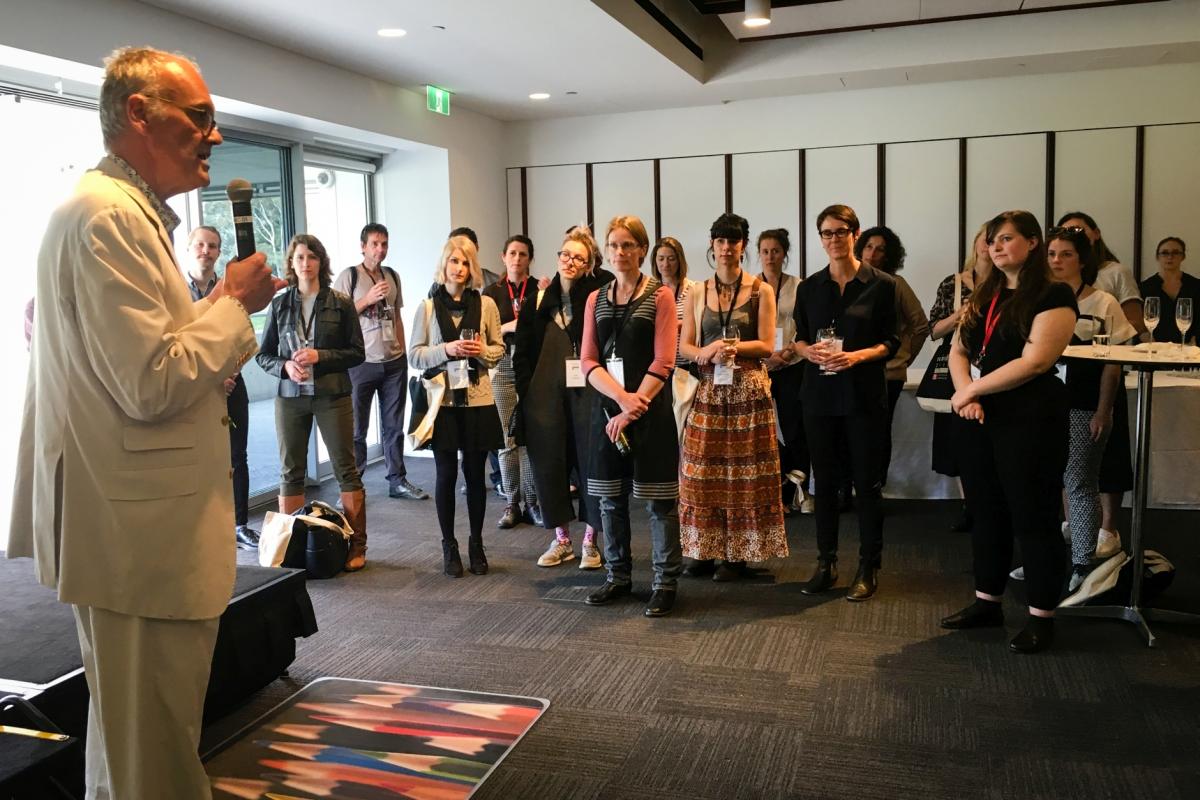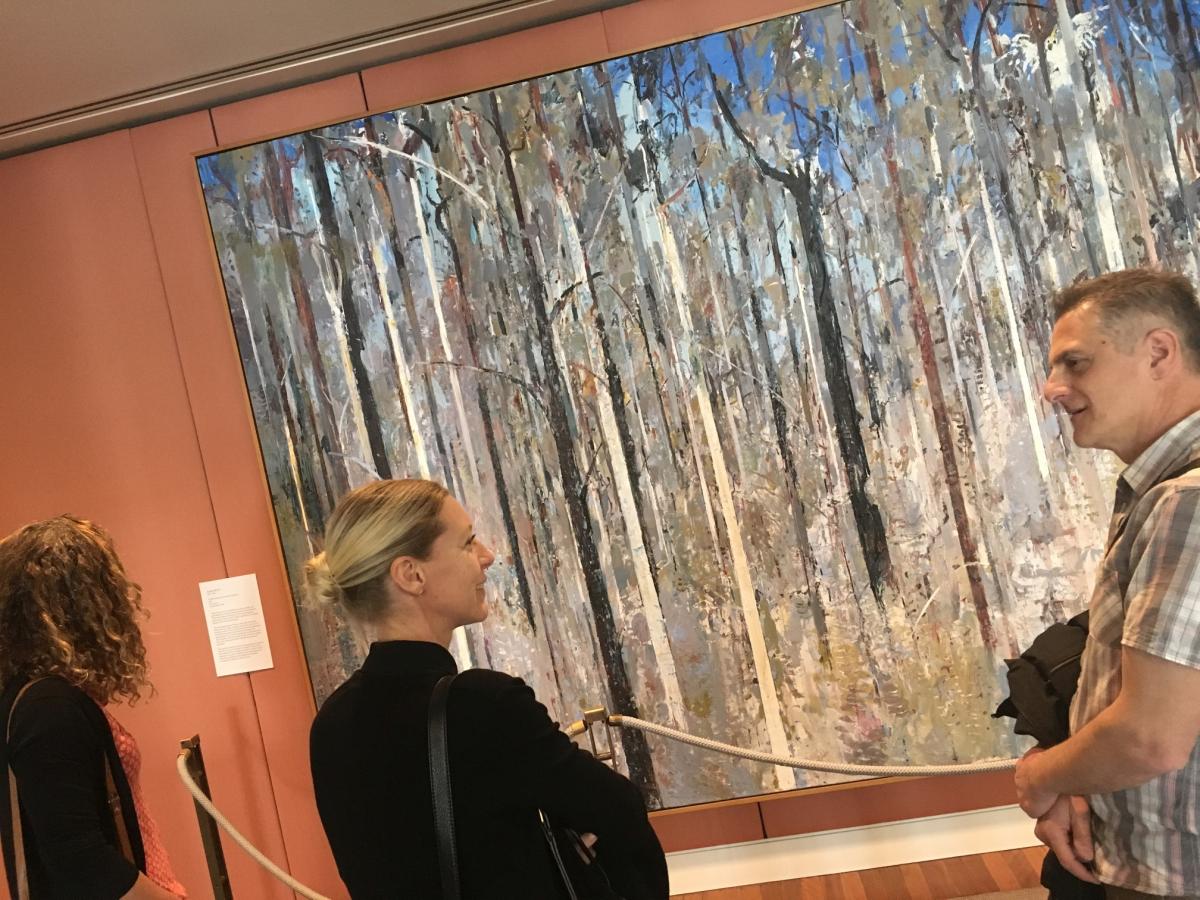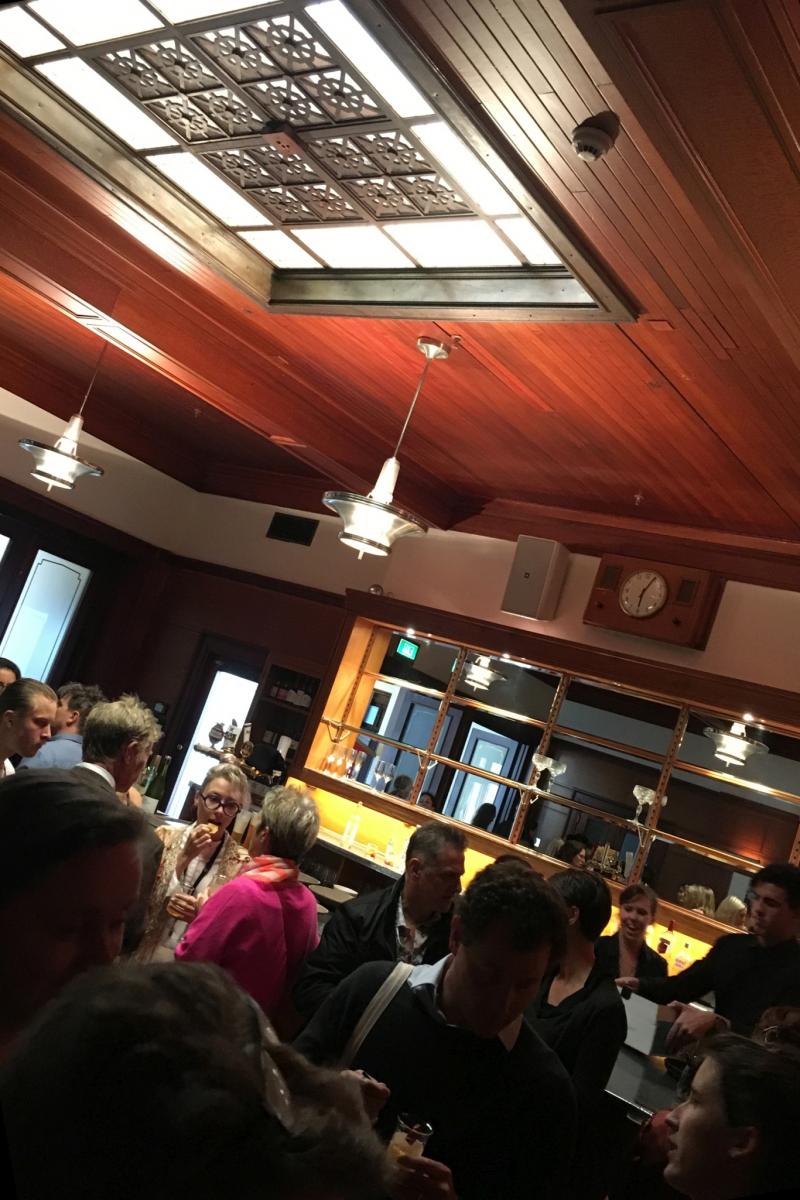Robyn Victory
2016 Graduate, University of Canberra, B Heritage, Museums and Conservation
AICCM SIG symposia are events that students and new graduates like myself revel in. They provide an opportunity to grab a snapshot of the expertise and activities present in our chosen specialisations, and move amongst those who have done it all. The 14th AICCM Paintings SIG held at the National Portrait Gallery in Canberra last month satisfied all these criteria.
Adding a great twist to the design of the program, the organisers allocated the first day to tours and workshops, presenting a wonderful opportunity for small groups to get acquainted before sitting down to two days of talks. I was quick to sign up for the visit to Sara Freeman’s studio and onwards to her group exhibition in New Acton. Sara’s beautiful landscape paintings of layered colour and engraved markings brewed from beeswax, egg tempera and pigments created enormous interest within our small group. As a fresh graduate, my task was to absorb.
If space were not at a premium, pages could be written about the diversity of talks over the following two days. From Sarah Cove’s thirty-year Constable Research Project where we discover that maybe Constable was the ‘true father of modern painting’, to the analysis by Simon Ives and Matthew Brookhouse of a portrait of Henry VIII and the research carried out to date its quarter-sawn oak panel; the practical challenges of hanging multi-panel works and bark paintings, and stretching a tall, curved canvas backdrop around a diorama; from the conservation of Mirka Mora’s painted soft sculptures to insights into lining on vacuum hot tables; understanding the formation of zinc soaps to investigating the properties and issues with epoxy and acrylic resin coatings on contemporary works.
For the fledgling conservator it is clear that we have entered a complex and intriguing profession where there is so much to learn. As the symposium was well attended by students and new graduates I wondered how we might participate more in future meetings. Perhaps a student led Q & A session or a student-focused workshop? Either way, attending such a symposium with what seemed like a very tight-knit group of conservators was an inspiring and edifying experience.

Lucy Tedder
Grimwade Centre for Cultural Materials Conservation
There are many things to enjoy when attending a symposium; new topics, old topics, socialising and of course the symposium goody-bags. All of these things were present at Revivify, and in the end I believe the symposium was a true success. For those who couldn’t make it, here’s what happened.
The first day consisted of the attendee’s choice of morning and afternoon workshop followed by drinks and an address by the Director of the National Portrait Gallery, Angus Trumble. I thought this day was a great way to start the symposium, as it gave us all a chance to catch up with friends and colleagues whilst seeing a bit of Canberra.
The second day of the symposium began two days of talks by various speakers, and was followed by the symposium dinner, which was a bit of a blast in my opinion. The third day wrapped things up with the last of the speakers delivering their talks, as well as the Paintings SIG general meeting tucked into the lunch break. Some attendees stayed for the entire three days, some stayed just for one, but I think everyone took something away with them.
The talks delivered to attendees were varied; some were case-study style deliveries focused on one particular treatment and some were more analytically focused. For example Maria Kubik delivered a talk on Italian cassoni (or wedding chests) while Gillian Osmond updated us on her work with zinc soaps and their role in paint delamination. As well as this there were talks from the perspectives of both members of the private sector as well as conservation staff working in institutions. I particularly enjoyed Helen Gill’s talk covering her treatment of the rediscovered works of T.R. Pridgeon and Jocelyn Evans’ lightning talk on the treatment of dioramas at the Australian War Memorial. Saying this however, all of the talks were very interesting and delivered with the kind of enthusiasm only a conservator may understand.
From a practical perspective the venue met the symposium’s needs very capably and Director Angus Trumble made us feel very welcome. Being quite a small symposium we spent both days of talks in the same room, moving to the adjoining space for food, drinks and trade-stands. The electrical equipment seemed to function smoothly, which I’m sure is a concern for anyone who has ever needed to deliver a talk, but the chairs for attendees were perhaps not designed to be used for such long periods of time.

The organising committee appeared to do a stellar job, with no obvious mishaps. Everyone knew where they had to be and when, the days finished on schedule and most importantly, the speakers all had their chance to speak. The tiniest details were attended to, and it seems the organising committee had a bit of fun with the program at the same time. Most notably was the swing dancing and design-your-own ice-cream cart at the symposium dinner, and the souvenirs provided to all the speakers at the conclusion of their talks.

Finally, I would like to voice my admiration at the number of speakers who managed to work the word ‘revivify’ into their presentations; it certainly revivified my interest in a whole symposium’s worth of conservation topics, and I can’t wait for the next one.




